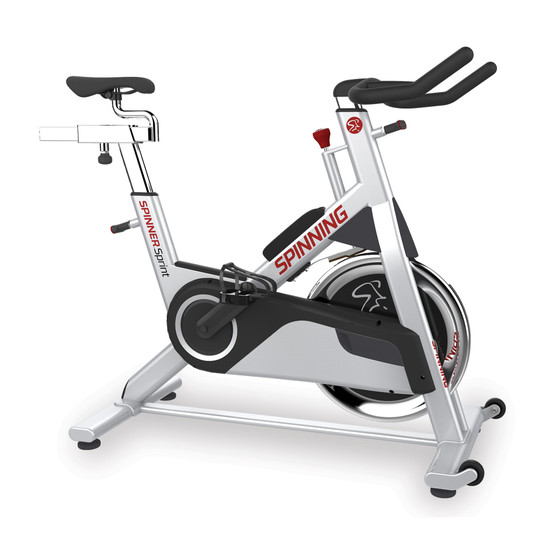Recumbent Bike VS Spinning Bike
Recumbent Bike vs Spinning Bike: Unraveling the Pros and Cons of Each for Optimal Exercise Experience
When it comes to indoor cycling, two popular options that often come to mind are recumbent bikes and spinning bikes. Both these exercise machines offer a great way to stay fit and healthy, but they have distinct differences that make them suitable for different fitness goals and preferences. In this article, we will delve into the pros and cons of recumbent bikes and spinning bikes, helping you make an informed decision about which one suits you best.
Understanding the Differences between Recumbent Bikes and Spinning Bikes
Recumbent bikes are stationary bikes that come with a comfortable, reclined seat and a backrest. They offer a low-impact workout that puts minimal stress on the joints. On the other hand, spinning bikes, also known as indoor cycling bikes, mimic the experience of riding a road bike. They have an upright design, similar to traditional bicycles, and feature a weighted flywheel for resistance. Understanding these differences is crucial in determining which bike is better suited for your exercise needs.
Pros and Cons of Recumbent Bikes
Recumbent bikes have several advantages that make them a popular choice for many fitness enthusiasts. One of the primary benefits is the ergonomic design, which provides excellent back support and reduces strain on the lower back. This makes recumbent bikes ideal for individuals with back issues or those who prefer a more relaxed and comfortable workout. Additionally, recumbent bikes are known for their low-impact nature, making them perfect for individuals with joint problems or those recovering from injuries.
However, there are also some drawbacks to consider. Recumbent bikes may not offer as intense of a workout as spinning bikes, which could be a disadvantage for individuals looking for a high-intensity cardio session. Furthermore, recumbent bikes are generally larger in size and take up more space, which can be a limiting factor for those with limited room at home or in the gym.
Pros and Cons of Spinning Bikes
Spinning bikes, on the other hand, provide a more intense and challenging workout. The upright position engages the core muscles and promotes proper posture. The resistance levels can be adjusted to simulate various terrains, allowing for a highly customizable workout experience. Spinning bikes are also known for their ability to burn a significant number of calories in a short amount of time, making them an excellent choice for weight loss goals.
However, spinning bikes may not be suitable for everyone. The upright position and lack of back support may be uncomfortable for individuals with back problems. The high-intensity nature of spinning workouts can also put more stress on the joints, which may not be ideal for individuals with joint issues or injuries.
Factors to Consider when Choosing between Recumbent Bikes and Spinning Bikes
When deciding between a recumbent bike and a spinning bike, there are a few factors to consider. Firstly, consider your fitness goals. If you're looking for a low-impact workout that prioritizes comfort and joint health, a recumbent bike might be the better option. On the other hand, if you want to challenge yourself with high-intensity cardio workouts and burn calories quickly, a spinning bike may be the more suitable choice.
Another factor to consider is your physical condition. If you have back problems or joint issues, a recumbent bike's ergonomic design and low-impact nature may be more beneficial. However, if you have a strong core and good posture, and you enjoy challenging workouts, a spinning bike may be the better fit.
Which Bike is Better for Weight Loss and Cardiovascular Health?
Both recumbent bikes and spinning bikes can aid in weight loss and promote cardiovascular health, but they do so in different ways. Recumbent bikes provide a low-impact, steady-state cardio workout that helps burn calories and improve cardiovascular endurance. On the other hand, spinning bikes offer high-intensity interval training (HIIT) workouts that can boost metabolism and burn calories even after the workout is over.
If you prefer longer, moderate-intensity workouts, a recumbent bike can be an effective tool for weight loss and cardiovascular health. However, if you enjoy shorter, more intense workouts that push your limits, a spinning bike may yield better results.
Which Bike is Better for Low-Impact Workouts and Joint Health?
If you have joint issues or are recovering from an injury, a recumbent bike is generally a better option. The reclined seating position and the minimal stress on the joints make it a comfortable and safe choice for low-impact workouts. The smooth pedaling motion also reduces the risk of joint pain or discomfort.
While spinning bikes can still provide a low-impact workout, the upright position and the higher intensity may not be suitable for individuals with joint problems. It's important to listen to your body and choose the bike that won't exacerbate any existing joint issues.
Which Bike is Better for Muscle Toning and Strength Building?
When it comes to muscle toning and strength building, spinning bikes have the upper hand. The upright position engages the core muscles, including the abdominals and lower back, providing an excellent workout for these muscle groups. Additionally, the resistance levels can be adjusted to simulate uphill climbs, which helps strengthen the leg muscles, including the quadriceps, hamstrings, and calves.
While recumbent bikes do provide some muscle toning benefits, they primarily target the lower body muscles. The reclined position and the focus on cardiovascular endurance make it less effective for overall muscle toning and strength building.
Tips for Getting the Most out of Your Recumbent Bike or Spinning Bike Workout
Regardless of whether you choose a recumbent bike or a spinning bike, here are some tips to maximize your workout:
- Warm up before every session to prepare your muscles and joints for exercise.
- Gradually increase the intensity and duration of your workouts to avoid overexertion.
- Incorporate interval training into your routine to challenge yourself and boost calorie burn.
- Maintain proper form and posture throughout your workouts to prevent injuries.
- Don't forget to cool down and stretch after each session to aid in muscle recovery.
Conclusion: Choosing the Right Bike for Your Exercise Goals and Preferences
In the battle between recumbent bikes and spinning bikes, there is no clear winner. The choice ultimately depends on your exercise goals, physical condition, and personal preferences. If you prioritize comfort, joint health, and low-impact workouts, a recumbent bike might be the better choice. However, if you enjoy intense, high-intensity cardio sessions and want to challenge yourself, a spinning bike may be more suitable.
Remember to consider your fitness goals, consult with a fitness professional if needed, and try out both types of bikes before making a decision. Ultimately, the right bike for you is the one that keeps you motivated, helps you achieve your fitness goals, and provides an enjoyable exercise experience.
CTA: Find the perfect indoor bike for your needs and start your fitness journey today!


